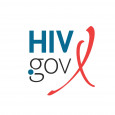Last week during the 2024 Conference on Retroviruses and Opportunistic Infections (CROI), HIV.gov spoke with CDC’s Robyn Neblett Fanfair, MD, MPH, CAPT USPHS, about the results of the Together TakeMeHome project and other studies presented during the conference. Dr. Neblett Fanfair is the Director of the Division of HIV Prevention at CDC. Watch our conversation with Dr. Neblett Fanfair in the video at the top o this article an on HIV.gov’s YouTube channel.
Initial Program Results Show Free HIV Self-Test Kits Are Reaching Priority Populations
Together TakeMeHome is a CDC-sponsored project with several partners that aims to distribute one million free HIV self-test kits over five years. Dr. Kevin Delaney of CDC’s Division of HIV Prevention presented results from the first nine months of the program at CROI. Launched in March 2023, the project received 181,558 orders in its first nine months. Most orders (86%) were for two tests, resulting in 337,812 total tests distributed.
Sixty percent (108,715) of all orders contained enough information to describe participants in terms of the priority populations. Of these 61% were from men reporting male partners in the past 12 months (18% from Black MSM and 33% from Hispanic MSM), 10.7% from gender diverse persons, and 10% from Black women. Most orders (26%) were placed by persons who had never tested for HIV, or who had last tested more than12 months ago (27%). Read the abstract reporting program results from March-December 2023. Dr. Neblett Fanfair said she is proud to see the kits being ordered by members of communities that are disproportionately impacted by HIV. “This shows how impactful this is to meet people where they are with what they need to be met with. We’re really excited that it’s not just about HIV self-tests, but it also opens the door to STI testing and PrEP as well,” Dr. Neblett Fanfair said.
CDC Studies on PrEP and PEP Awareness and Uptake
Dr. Neblett Fanfair also discussed two additional CDC studies presented at CROI:
The first study examined PrEP awareness and uptake among people who inject drugs and found that although PrEP awareness increased from 26% in 2018 to 35% in 2022, PrEP uptake has remained stable at 1% among this population. “It really highlights the need for more work to help increase awareness, education, access, and uptake of PrEP among this special population,” Dr. Neblett Fanfair said. Read the abstract about this CDC study.
The second study investigated trends in HIV post-exposure prophylaxis (PEP) prescriptions over the past 10 years and did not find an increase in prescriptions over time, while PrEP prescriptions increased significantly during the same period. “PEP may be an underutilized tool in our HIV prevention toolbox. At CDC, we’re working on updating our non-occupational and occupational PEP guidelines this year,” she said. Read the abstract for this CDC study.
Other CROI Highlights
Dr. Neblett Fanfair also shared other CROI highlights that she’s eager to share with her team, including the incredible work presented by many researchers on long-acting injectables both for HIV prevention and treatment. She added that a panel on living into young adulthood with perinatally-acquired HIV was also inspiring.
Catch Up on More HIV Research Updates
HIV.gov has shared other interviews from CROI 2024 with federal HIV leaders, participating researchers, and community members. You can find all of them on HIV.gov’s social media channels and recapped here on the blog.
About CROI
More than 3,600 HIV and infectious disease researchers from 73 countries gathered in Denver and virtually from March 3-6 this year for CROI, an annual scientific meeting on the latest research that can help accelerate global progress in the response to HIV and other infectious diseases, including STIs and viral hepatitis. Over 1,000 summaries of original research were presented. Visit the conference website for more information. Session webcasts and more information will be published there for public access in 30 days.
This blog post was published March 15, 2024, on HIV.gov.








Comments
Comments